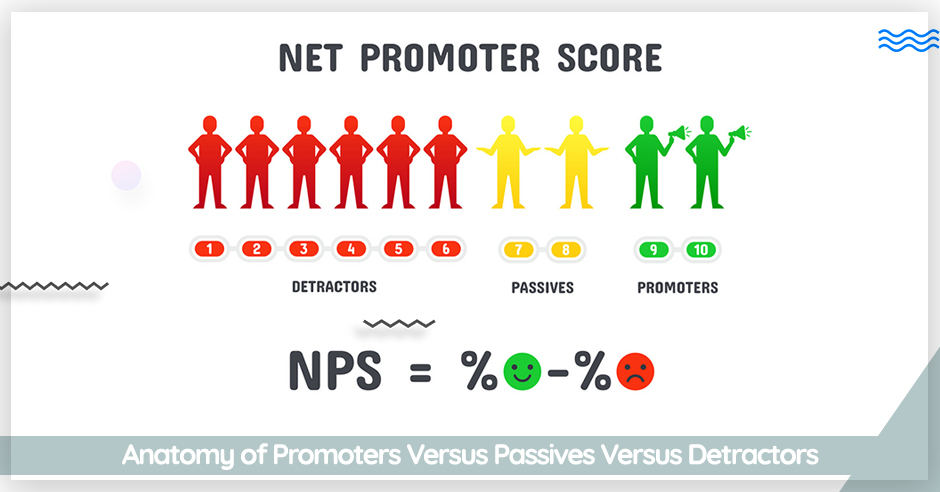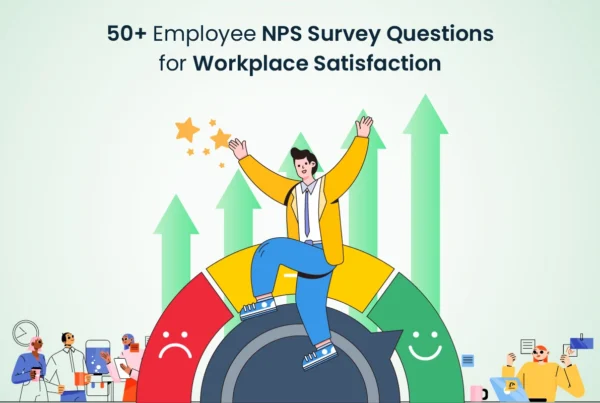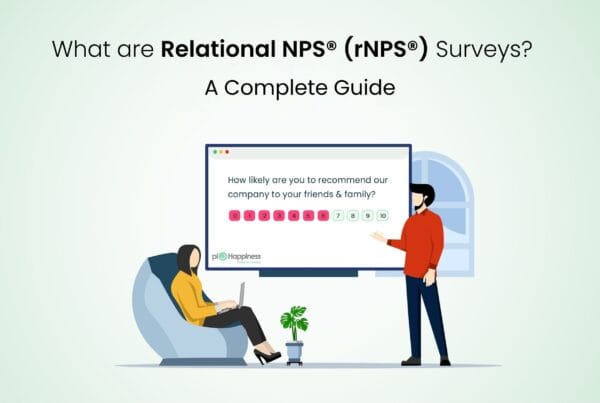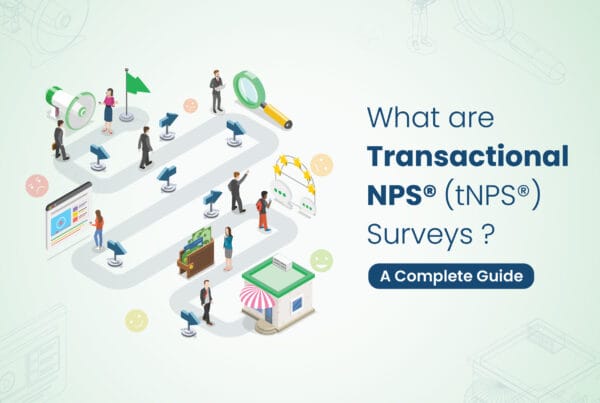Anatomy of Promoters Versus Passives Versus Detractors
In general, a Net Promoter Score (NPS) survey is a simple metric which is used in customer experience programs. It measures how likely your customers are going to prescribe your business to their loved ones.
Discover how to turn your Passives into Promoters and minimize Detractors! 🚀
Start optimizing with piHappiness today! 🌟In an NPS survey customers are asked to rate their experiences, generally on a scale of 0-10. A Net Promoter Score Software then collects NPS feedback, track changes, and gives actionable insights. The final result of the NPS survey helps categorize the consumers into three categories- promoters, passives, and detractors.

How to Calculate Net Promoter Score?
Calculating NPS Score is very simple, you just have to deduct the level of Detractors from the level of Promoters.
For instance, if 10% of respondents are Detractors, 20% are Passives and 70% are Promoters, your NPS score would be 70-10 = 60.
What is a Good Net Promoter Score?
The higher the score, the better. And of course, if the NPS score is below 0 then it is considered a bad score, which suggests people are spreading bad sentiment about your business than good.
In general, if your businesses rating is between 0-30 then it is considered that your business is doing ok; if your business rating is above 30, then it is considered that business is running good, and if it is crossing 70, then it is considered that your business is running extremely well.
Top level organizations by and large have a NPS of 70 or more, yet in the event that you’re thinking this is the domain of big, worldwide organizations only, just reconsider: in 2018, Netflix had a NPS of 64, PayPal scored 63, Amazon 54, Google 53, and Apple 49 according to hotjar.com.
NPS scores vary as per industry, so it is a good idea to benchmark your performance against the average. Most of the industry averages are between 30 and 50.

Who are Promoters, Passives, and Detractors in an NPS Survey?
According to the score given by the consumer in an NPS survey, the ones who score from a 0-6 are classified as detractors, 7 and 8 are passives, and 9 and 10 are promoters.

Promoters: – These are the people who give ratings between 9-10 and are steadfast fans who will continue to purchase and fuel growth by referring to your business to their friends and family members.
Passives: – These are the people who give ratings between 7-8 and are satisfied, however, are apathetic clients who are defenseless against serious contributions.
Detractors: – These are the people who give ratings between 0-6 and are troubled clients who can harm your image and obstruct development through bad word-of-mouth.
Since word-of-mouth is the most effective promotion tool, it is important to employ an NPS customer feedback app to identify the categories to which your customers belong.
Common Questions About Passives, Promoters, and Detractors in Customer Service Departments
How Do You Identify Passive, Promoter, and Detractor Customers?
The simplest way is to send out feedback surveys pre- and post-delivery of a product or providing of a service. In the wake of sending the surveys, you want to perform survey analysis and distinguish the level of each group: Passive, Promoter and Detractor.
For example, if your goal is to collect as many customer insights as possible. In that case, you will have to go further than only the essential scoring question. Each score ought to be trailed by an open-ended question that could go either way, permitting clients to speak out about their issues and expand on their scoring.
Your NPS score will then allow you to identify Promoters, Passives, and Detractors.
Why It is Important to Identify Promoters, Passives, and Detractors?
A promoter is a customer who is most likely to suggest the service to others. A person is most likely to try a service when it’s suggested by a friend or an acquaintance instead of being suggested through advertisements or other promotions. Once your promoters are identified, it is important to learn about the right things you have done and keep them happy, because according to McKinsey and Company’s research, 20-50% of a company’s revenue is driven by referrals.
The passives are tricky because they aren’t disappointed but aren’t going to go out of their way to endorse your product. They are simply consumers and not customers. They don’t really tip the scales towards good or bad, but they offer potential. Passives might switch to similar products based on where they get more incentives, hence a passive could be a potential promoter or detractor based on how quickly the company takes an action to convert them.
A consumer is more likely to share negative feedback than positive feedback, which is why detractors can be harmful. Not only do they take the sales with them but also take away potential sales. To counter one detractor, therefore, a minimum of two promoters will be required. It is therefore of utmost importance to identify a detractor and improve their experience to prevent a domino effect of bad referrals.
It is, therefore, important to identify your detractors, promoters, and passives. Customer feedback applications can help you monitor and track customer experience and even take NPS surveys.
NPS feedback surveys help you to identify unhappy customers who are facing problems with your brand and will empower you to address these problems before they churn.
How to deal with a Promoter, Passive and a Detractor?
Promoter: – While dealing with a Promoter your primary concern must be to keep the standards high and the experiences consistent. You will have to distinguish the right things you have done and continue to do them so that Promoters stay happy.
In addition, you can encourage them to become brand ambassadors by offering them referral bounces and discounts.
Passive: – Passives are trickier people since they don’t give a straightforward answer. They don’t love your brand, nor do they hate your brand.
The important step here to identify is what is lacking from passives’ experiences.
You must allow the Passives to express themselves beyond the basic rating question. Give them some open-ended questions and provide space for them to tell you what you can do better.
Detractors: – To deal with detractors, you will first have to identify the reasons behind their bad experience. You will have to then include the feedback in customer journey mapping to make sure you are not making the same mistakes twice.
Now, as indicated by every detractor’s worth, offer up advantages or rewards to relieve the awful experience. Your main goal should be to prevent the Detractor from stirring, bad-mouthing you, or leaving negative reviews on your social media accounts.
How to turn Passive into Promoter?
You can transform Passive clients into Promoters in more than one way. Begin by asking Net Promoter Score, take feedback on ways that you can further develop their client experience. Then, investigate Net Promoter Score reports for patterns. At long last, do whatever it may take to further develop consumer loyalty.
How to turn Detractor into Promoter?
After you have received negative feedback from Net Promoter Score Surveys, try contacting the detractor as soon as possible. Work on to understand their dissatisfaction and offer them a positive solution.
The most important part is to gain from their feedback to help brand dependability and keep different clients from becoming detractors.
Frequently Asked Questions
What are Promoters, Passives, and Detractors?
Promoters, Passives, and Detractors address clients who give NPS feedback in light of their experience with your organization.
What are Promoters and Detractors in NPS?
Promoters are clients who cherished their experiences and gave you scores of 9 and 10. Detractors are unhappy clients, who evaluated their experience somewhere in the range of 0 and 6.
What are Passives in NPS?
Passives are clients who neither love nor hate the experience with your brand. They give you 7 and 8 scores and are for the most part unconcerned towards your relationship.








